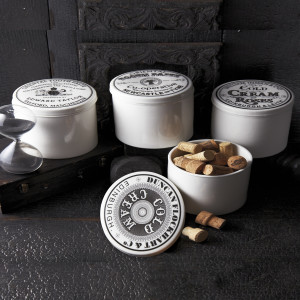
 Once upon a time, all toothpaste was sold in jars. Nowadays, almost all toothpaste comes in tubes made of plastic laminate, a substance known as a “monstrous hybrid” by environmentalists as it is almost impossible to recycle. The composite parts, made of different types of plastic, are incredibly hard to separate (as they must be for recycling), and the tubes are difficult to clean. I think it’s a safe bet that most of us don’t even try.
Once upon a time, all toothpaste was sold in jars. Nowadays, almost all toothpaste comes in tubes made of plastic laminate, a substance known as a “monstrous hybrid” by environmentalists as it is almost impossible to recycle. The composite parts, made of different types of plastic, are incredibly hard to separate (as they must be for recycling), and the tubes are difficult to clean. I think it’s a safe bet that most of us don’t even try.
I found some instructions online on how it is possible to deconstruct a toothpaste tube, discard the top part, slit open the tube, clean out the residual toothpaste (a surprising quantity of which will still be available to use), wash it, and then use the material for craft projects, or have it recycled if you are lucky enough to have a recycler who accepts composite materials with different layers laminated together. Again, I think it is safe to say that this hardly ever happens in practice.
Because of this, what does happen is that millions of toothpaste tubes end up accumulating in landfills year after year, or worse, are swept into waterways as litter that ends up polluting the marine environment. Here, they break down into indigestible particles that marine life mistake for food. Plastics absorb toxins such as polychlorinated biphenyls and dioxins from water or sediment and transfer them to the marine food web and potentially to human diets. Many studies of fish have found plastic chemicals in a range of fish species and locations. (You can read more about these issues here, and here.)
The situation is summed up well in an article I read on the Green Choices website. It says:
“Overall, the problem is that packaging is driven by the desire to promote brands and to make money, not by the desire to meet real human needs, or by the desire to protect our environment. Faced with such a system, the best we can do as individuals is to minimise our consumption of packaged products – even healthy, organic ones! – and to use whatever recycling facilities are currently available”
The same article recommended returnable glass as the best environmental option, and I agree. A sturdy glass jar can be returned for re-use, re-used as a storage container for spices etc., or as a last resort, recycled easily. As an added bonus, it is easy to make sure you use up every last bit, and none goes to waste.
I don’t see a messy, toxic plastic tube as a step forward from this. Do you?
Interested in Advertising with Us?
Promote your brand and reach an engaged audience who values quality, sustainability, and healthy living.
Contact us to learn about our advertising opportunities.
CONTACT US